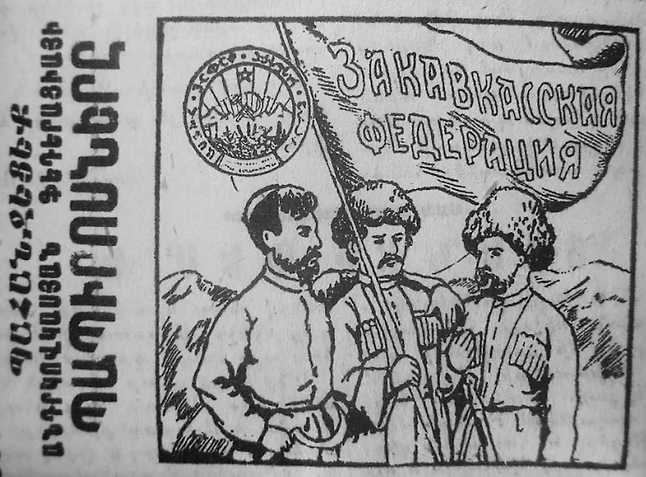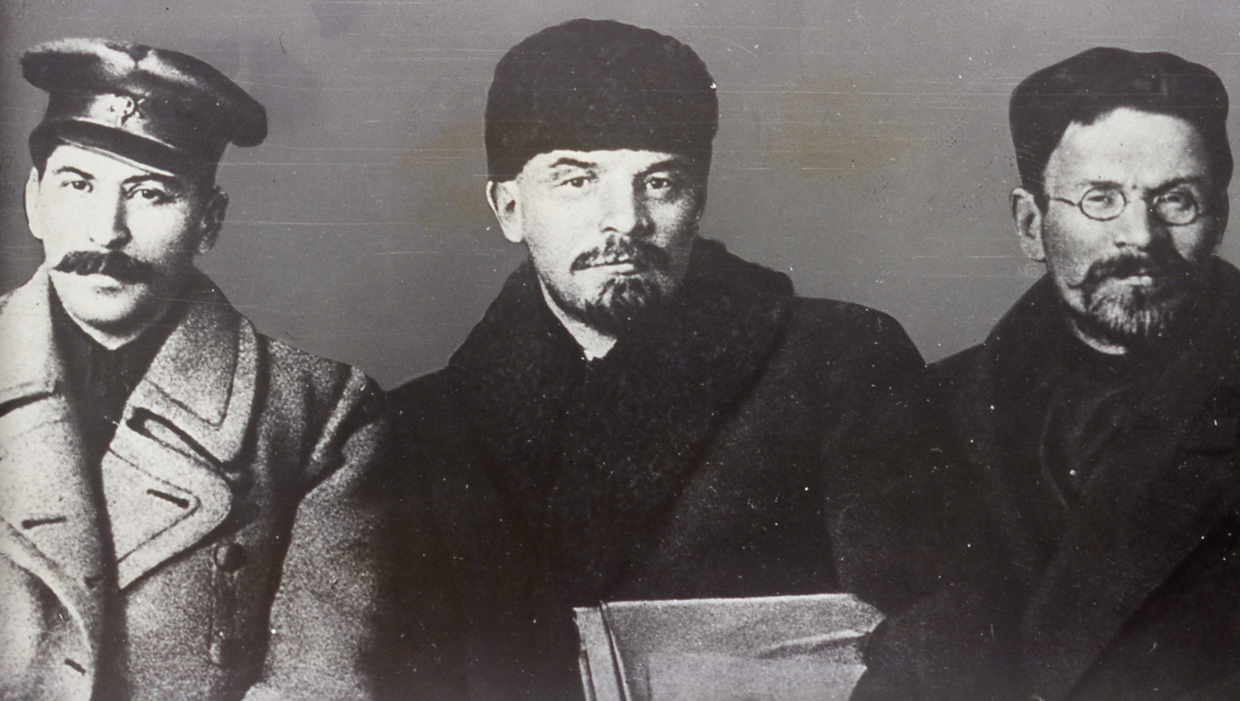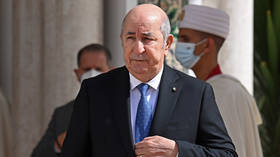Lenin's Yugoslavia: How a plan to create a 'Soviet Switzerland' was shot down by Stalin and other locals

Exactly 100 years ago, the Transcaucasian Socialist Federal Republic (TSFSR) was formed, becoming one of the four founding republics of the USSR. On December 13, 1922, Georgia, Armenia and Azerbaijan attempted to create a single state, possibly considered a forerunner of a similar attempt further west, known as Yugoslavia.
While the Balkan experiment ended with a long war, Transcaucasia – even after the collapse of the TSFSR – remained peaceful for many years. How did it happen and what role did Moscow play?
On the Periphery of an Empire
After the revolution and during the Civil War, Transcaucasia was on the periphery of the central authorities’ attention. Life there continued as usual, while the fate of all the lands of the Russian Empire was decided in St. Petersburg. The Provisional Government, which convened after the abdication of Nicholas II in February of 1917, announced the convocation of a new representative body – the Constituent Assembly – while voicing the intention to grant nations the right to self-determination. A Special Transcaucasian Committee consisting of five State Duma deputies was created to manage the territories of the Tsarist Caucasian viceroyalty.
The committee was headed by Vasily Kharlamov, representative of the liberal Party of Cadets. It also included representatives of the Socialist Revolutionaries, the most popular party in the empire, as well as the Armenian Revolutionary Federation, the Azeri Musavat Party, and the Georgian Socialist-Federalist Revolutionary Party. The latter was replaced by a member of the Menshevik Socialist Party, which was popular in Tbilisi.
This composition corresponded to the balance of power in the region and was convenient for managing and maintaining the status quo during preparations for the Constituent Assembly, but not for the upcoming power struggle. The fact is that in Transcaucasia, as well as throughout Russia, dual power was established very quickly. The Provisional Government formed by the State Duma enjoyed the right of succession of power and exercised its powers from the center, but grassroots councils of deputies consisting of workers, peasants and soldiers operated locally (the First World War was still ongoing).
In Transcaucasia, there were actually only two large cities, two capitals. The administrative and cultural center was Tiflis (as Tbilisi was called until 1936) in Georgia, which had been a center of tsarist power for 150 years. The economic and industrial center was Baku in Azerbaijan, where oil had been produced since the 1870s. And while the power of the Provisional Government prevailed in Tiflis, the local Soviet of Workers' and Soldiers' Deputies headed by the charismatic Bolshevik Stepan Shaumyan was more important in working-class Baku.
In October of 1917, the Bolsheviks carried out a military coup in Petrograd and announced the dissolution of the Provisional Government. Then, in place of the Special Committee, a Transcaucasian Commissariat was formed in Tiflis, where the Georgian Social Revolutionaries and Mensheviks, who were hostile to Lenin and the Bolsheviks, maintained control. At the same time, Soviet power was established in Baku, and Shaumyan was appointed extraordinary commissar of the Council of People’s Commissars (central government of the Bolsheviks) for the Caucasus.

From Imperial Backwater to National Republic in No Time
While political strife was intensifying in the northern Caucasus Mountains and Red and White blocs were gradually forming in the Civil War, inter-ethnic conflicts rapidly escalated in Transcaucasia. With the de-facto disappearance of the central government in the region, the numerous bones of contention between the Armenians, Azerbaijanis, and Georgians increasingly led to clashes resulting in casualties. Most often, armed clashes took place in disputed territories between the Armenians and Azerbaijanis, especially in Elizavetpol (Ganja) and Erivan (Yerevan).
The Ottoman Empire, which in recent years had suffered military defeats at the hands of the Russian army, added fuel to the fire. The Turks tried to reverse their fortunes by stirring unrest among the Muslim population of Azerbaijan and were quite successful in this. One of the leaders of the Georgian Mensheviks, Akaki Chkheneli, noted that “the armed Muslim population, adhering to the Turkish orientation, call themselves Turkish soldiers and terrorize the entire Christian population of Transcaucasia with its anarchic manifestations.”
After the Bolsheviks, who seized power in Petrograd, made peace with Turkey in December of 1917, the national question became less acute, and Transcaucasian politicians had the opportunity to decide how life would be organized in their lands. After the Bolsheviks had dispersed the Constituent Assembly, its deputies elected in the Transcaucasia formed a Transcaucasian Seim. Three national parties were represented in approximately the same proportion, with a slight formal preponderance of Georgians. It seemed that the situation in the region was stabilizing, but this feeling was deceptive.
Just two months after peace had been concluded with Turkey, when the Russian troops had nearly left the Caucasian Front, and the Armenian Corps, which had not yet been fully formed, took their place, the Turks violated the truce and launched a large-scale offensive.
As a result, the main task of the Transcaucasian Seim, which had not even had time to meet yet, was the conclusion of a peace treaty with Turkey. The question was at what price this peace would be achieved.

The disagreements between the three nations were particularly pronounced here. The Armenians advocated the preservation of Transcaucasia as part of Russia, since only it could guarantee the eastern Armenians safety from the massacre that befell their Western relatives. In addition, the Armenians hoped to preserve the territorial acquisitions of the Russian Empire in Western Armenia, which belonged to Turkey. The Azerbaijanis believed that Transcaucasia should decide its own fate independently of Russia, making peace with Turkey on the basis of refusing to interfere in its internal affairs. Moreover, the idea of joining Turkey was very popular among Azerbaijanis. The Georgian side basically supported Baku on the issue of declaring the independence of Transcaucasia and concluding an independent agreement with Turkey, since Transcaucasia simply did not have the strength to confront Turkey militarily. At the same time, the Georgians expected that Germany or another European power would become the guarantor of independence.
None of the three sides was willing to compromise, and while they argued among themselves, Turkey made more and more ambitious demands on Transcaucasia as it easily advanced along the front. It quickly became clear that it would be easier for each of the peoples to achieve their goals separately – the Transcaucasian Federation lasted a little more than a month and was dissolved in May 1918.
In 1918-1920, the newly formed Transcaucasian republics that took its place fought with each other. The conflict between Armenia and Azerbaijan over Nagorno-Karabakh was particularly bloody. The stability of the fledgling states was first guaranteed by the intervention of Germany and Turkey, and later, after they surrendered in the World War, by Britain, which was interested in Baku's oil. Britain intended to help the White troops in the south of Russia, and also supported national movements in the North Caucasus, including through the provision of weapons. In parallel, the Transcaucasian republics fought for recognition in the international arena and sought to enter the League of Nations.
However, all these efforts were nullified after the Red Army completed its defeat of the Whites in the North Caucasus in April of 1920 and entered Azerbaijan, the old base of the Baku Council. Subsequently, having agreed with the Turkish government of Kemal Ataturk, it went on to occupy Armenia and Georgia. Thus, the Bolsheviks’ power was established in all three of Transcaucasia’s national republics by the end of the year.

Where Revolution Ends
The year 1921 was pivotal in the Civil War. Uprisings broke out in the Tambov Region, Western Siberia, and Kronstadt, which were brutally suppressed by the Red Army. Famine raged in the Volga Region and in Ukraine. The first signs of an impending split appeared within the Bolshevik Party, and The New Economic Policy was announced. At the same time, there were discussions about the administrative structure of the new state and the solution of the national question.
From the onset of the Revolution, the Bolsheviks had vowed to destroy the Russian Empire as a “prison of peoples” and give all nationalities the right to self-determination. In the first stages, this actually saved them, since without the strength and organization of Latvian riflemen, their uprising would undoubtedly have been suppressed. But by the later stages of the war, during the march on Warsaw, this promise had, in fact, already been broken. Now the task was to maintain control over the territory of the former empire, while demonstrating how progressive the Marxist system was by satisfying requests for national sovereignty. There were two approaches to solving this problem.
The proponent of the first was Stalin. The party considered him to be the main specialist in ethnic affairs due to his Georgian origin and a rather superficial work he wrote in 1913, entitled Marxism and the National Question. In this pamphlet, he pointed to a common language, territory, economy, and character as obligatory traits for defining a nation. On this basis, for example, ignoring 2,000 years of history, he claimed that the Jews were not an independent people, and their assimilation was an imminent and inevitable process.
In 1921, Stalin looked at the possibility of joining all the Socialist Republics to Russia while granting them broad autonomy. At the same time, distinctions were made between supposedly established, full-fledged nations and nationalities that could skip the national stage of historical development and move directly from a feudal system to a communist one without the formation of an intermediate national bourgeois state. This approach would further divide the former empire into Socialist Republics within the USSR, with the formation of autonomous regions within them. Thus, Stalin was already thinking in terms of the borders of the former Empire, leaning, in fact, to the idea of ‘peaceful coexistence’ of two systems – communist and capitalist – which he later realized.
Lenin and Trotsky thought quite differently. They believed to a much greater extent in the idea of a world revolution and were also guided by the economic theory of communism. According to it, agrarian Russia was insufficiently developed and did not have sufficient means of production (industry, science, communications) to build communism. A young country simply could not survive alone, opposing the entire bourgeois world, which was much more developed. They believed in the need for a permanent revolution that would be exported from Russia, with subsequent unification of the economies of communist countries. Given the revolutions taking place in Germany and northern Persia, as well as the popularity of leftist ideas there, all this seemed quite realistic.
Employing this supranational logic, Lenin proposed unifying the Transcaucasian republics into a single state on territorial principles. In addition, the presence of such a multinational federation among the founding countries of the USSR, which probably reminded the Bolsheviks of Switzerland, would emphasize the international status of the Soviet Union and hint at the possibility that other communist countries could voluntarily accede to it. And, since Lenin’s authority in the party was absolute, this was the position that prevailed.

However, this was probably his last clean victory. The federal treaty between socialist Armenia, Georgia and Azerbaijan was signed on March 12, 1922, but Lenin was to suffer his first stroke in May. The struggle for power that began afterwards was won by Stalin, and the federal character of the Soviet Union was already nominal in its 1936 constitution, which the national republics signed individually.
The disagreement on the issue of the federation of Transcaucasia clearly reveals a fundamental difference between the two heads of the USSR. For Lenin, the idea of building global communism was the primary goal, and Russia was only the means. Stalin was convinced that the most important thing was to retain power domestically, and ideas about a worldwide revolution could lead to its loss, and therefore was considered dangerous.
A Failed Union
How could the idea of uniting three ethnically, linguistically, religiously, and culturally different peoples in one country have appeared at all? If you look from Tbilisi, Yerevan, and Baku, the idea seems preposterous. But they were being observed from Petrograd and Moscow. The fact is that if we look at the Russian Empire as a colonial power and compare it with Spain, England, or France, then Transcaucasia resembles a colony.
When Catherine the Great signed the Treaty of St. George on the annexation of Kartli-Kakheti by the Empire in 1784, there was no normal land connection with Transcaucasia. The Caucasian ridge between Russia and Georgia was as difficult a natural barrier to overcome as the Atlantic Ocean between Spain and Mexico. In addition to the high mountains and snow-swept passes in winter, there was also a serious threat of attack from the local highlanders, which was only quashed by a long and bloody series of wars that lasted for a good half of the 19th century.
The ethnically diverse population of Transcaucasia did not have full-fledged statehood at that time, and local customs took the place of the law. In terms of colonial trade and natural resources, these lands may not have been as interesting as the colonies of Western European countries. Nonetheless, they could serve as a springboard for further expansion into the rich neighboring territories of the Ottoman Empire and Persia, which were beginning to weaken.
Accordingly, just as Spain paid little attention to the interests of the indigenous peoples of Mexico and Peru, Russia was primarily interested in convenience when it came to managing its ‘overseas’ territories. And since there were few real Russian colonists (most were military), the local population was content with the situation. Armenians, Azerbaijanis, and Georgians got along peacefully in Tbilisi and Baku. But as soon as the central government weakened, ethnic and religious conflicts began to flare up again, just as happened in India after the British left, for example.
The USSR’s social experiment with Transcaucasia was unique in that, thanks to the international ideology of communism, new colonies could develop on a par with the metropolises, and its citizens had the same rights, opportunities, and access to economic resources. After the Second World War, the Soviet Republics saw a rise in living standards and the construction of large infrastructure facilities. At the same time, interethnic conflicts seemed to have died out (although, as the collapse of the USSR showed, they were simply frozen), which made it possible for several generations to grow up with a sense of security.
Stalin, Sergo Ordzhonikidze, Anastas Mikoyan, and Lavrenty Beria were all born in peripheral colonies, but they ruled a huge metropolis by the 1930s. Little attention was paid to nationality in the USSR, and the privileges of hereditary elites did not exist. By comparison, the first non-Anglo-Saxon American president wouldn’t be elected until 1961 (the Irish Catholic John F. Kennedy), and the first baptized Catholic prime minister of the UK until 2019 (Boris Johnson).
And if we imagine that Lenin’s idea of a federal structure for Transcaucasia had not been buried by Stalin and that the post-Soviet leaders of such a federation would have had the political will to preserve unity, then who knows? Maybe today, instead of the constant threat of a war in Karabakh, there really would have been a Caucasian Switzerland – a serious regional power and an island of stability at the intersection of East and West. Or, of course, it could have imploded like Yugoslavia


















